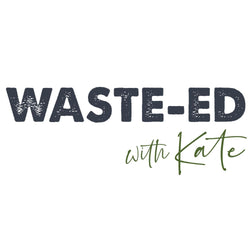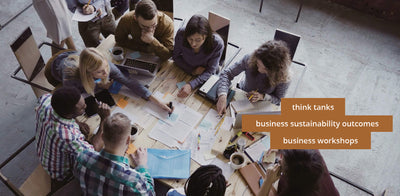8 tips for: When you're out and about
Drink your coffee in the cafe
Drinking coffee in a mug is actually the ideal zero-waste option – taking the extra 10-15 mins to enjoy your coffee in the cafe will save you from sending a whole lot of takeaway cups to landfill, and save you from having to buy a reusable takeaway cup.
New Zealanders drink around 295 million cups of takeaway coffee a year ( Stuff , 2018 ), almost all of which end up in landfills where they take 30+ years to break down ( The Guardian , 2016 ).
While single-use coffee cups that claim to be recyclable or compostable technically are, it’s estimated that around 99.75% aren’t recycled or composted because it’s too expensive to do so ( BBC , 2018) . In New Zealand, there actually aren’t any recycling facilities that will process recyclable coffee cups ( Stuff, 2018 ). This is because the cups are ‘contaminated’ and made from multiple materials (paper with plastic lining and lid).
On top of this, ‘compostable’ often doesn’t mean home-compostable – a lot of compostable packaging won’t break down in your backyard compost bin as it needs added heat and aeration to properly biodegrade and therefore needs to be process in a commercial composting facility. There are currently only 11 composting facilities that are capable of processing these coffee cups in New Zealand ( Beyond The Bin , 2017 ), so only a very, very small percentage of the 295 million cups are disposed of in an eco-friendly way.


Dine in instead of takeaway
Along with takeaway coffee cups, single-use food packaging is also a massive issue when it comes to waste production. One trip to a sushi shop often sends you away with a plastic container, napkins, chopsticks, mini soy sauce bottles, and a paper or plastic bag – most of which can be combated by simply choosing to eat at the restaurant using the plates provided. Side note: in New Zealand, establishments that serve food or drinks have to provide customers with free water, so no need to buy a bottle of water when you’re out for lunch.

Refuse the straw
For the vast majority of people, straws are completely unnecessary (bar perhaps children, people with disabilities, or the elderly). Next time you order a smoothie or iced coffee at a cafe, ask for it without the straw, it will save that plastic from ending up in landfill, or worse, the ocean.

Bring your own containers for takeaway meals
A lot of restaurants will now let you bring your own containers for your takeaways. Chances are you already have a draw or cupboard with a whole lot of plastic containers rattling around in it. Bring one of those next time you’re getting food to takeaway, whether that be lunch or dinner, and most places will oblige.

Use plastic containers/bottles more than once
Drinking coffee in a mug is actually the ideal zero-waste option – taking the extra 10-15 mins to enjoy your coffee in the cafe will save you from sending a whole lot of takeaway cups to landfill, and save you from having to buy a reusable takeaway cup.
New Zealanders drink around 295 million cups of takeaway coffee a year (Stuff , 2018), almost all of which end up in landfills where they take 30+ years to break down (The Guardian , 2016).
While single-use coffee cups that claim to be recyclable or compostable technically are, it’s estimated that around 99.75% aren’t recycled or composted because it’s too expensive to do so ( BBC , 2018) . In New Zealand, there actually aren’t any recycling facilities that will process recyclable coffee cups ( Stuff, 2018 ). This is because the cups are ‘contaminated’ and made from multiple materials (paper with plastic lining and lid).
On top of this, ‘compostable’ often doesn’t mean home-compostable – a lot of compostable packaging won’t break down in your backyard compost bin as it needs added heat and aeration to properly biodegrade and therefore needs to be process in a commercial composting facility. There are currently only 11 composting facilities that are capable of processing these coffee cups in New Zealand ( Beyond The Bin , 2017 ), so only a very, very small percentage of the 295 million cups are disposed of in an eco-friendly way.
Choose food in more eco-friendly packaging when shopping
If you have the option between plastic and glass, always choose glass. Plastic is a notoriously tricky material to recycle as only a few kinds can be, and it degrades in the process, meaning a plastic milk bottle cannot be recycled into another plastic milk bottle. Whereas glass doesn’t degrade and can be recycled over and over again without losing its integrity.
Sometimes food in glass packaging can be a bit more expensive, but it’s much better for the environment, plus you can use glass jars and bottles for storage or bulk-bin food buying. When it comes between plastic and paper food packaging, paper often can’t be recycled anyway as it will be lined with plastic or be food contaminated, in which case, the production process should be considered – i.e. it takes less non-renewable resources to make paper than it does plastic.
Buying fresh produce from the local farmers market or greengrocers, and meat from the butchers will also save a huge amount of packaging waste. It may take a tiny bit longer, but it may actually be cheaper than getting everything from the supermarket.


Only buy what you need
This Page Is Sponsored By:



